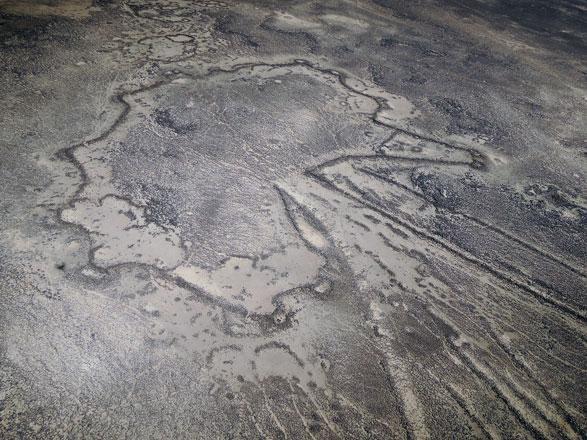
French anthropologist seeks to decipher ancient hunting techniques
A team of scholars came to Harrat Al Shaam, in northeastern Jordan, to learn more about desert kites, said Remy Crassard, a French anthropologist, noting "in 2015 and 2016, the 'Globalkites' team decided to do intensive archaeological work in the 'Black Desert', or Harrat Al Shaam'.
The team first worked around As Safawi, and then closer to Ar Ruwayshed, he said, noting 'our aim is to understand what were these gigantic 'desert kites' structures that are visible in satellite images"."The kites are made of long walls [up to over 6 kilometres] that lead to an enclosure with little rooms all around it,' Crassard explained.
'Thanks to our extensive surveys and the various excavations in many different structure types, we are now able to date these structures and know why they were built,' the scholar continued.The material found in soundings (test excavations) is very poor, if not absent in most of the cases, the French anthropologist said, adding that the material does not help in dating the use of the kites, but the time when the holes were filled in.
'We then had to find other way to date these archaeological structures, namely by using physical and chemical methods, such as the radiocarbon dating and other very specialised techniques,' Crassard explained.In addition, results of sampling of anthropogenic and natural sediments inside kites enable scholars to date the sediment itself and not only the organic material from the excavations, he continued.
'This is great because it gives us a date for the use of these structures,' the researcher underscored.Moreover, because of the high number of excavations conducted by the team, scholars are able to conclude that these kites were hunting traps, dating as far as the Neolithic period.
'This is interesting,' Crassard elaborated, noting that 'because human groups were still hunting at a wide scale at a time when they were supposed to be much more oriented towards a sedentary way of life, with domesticated animals, in the famous 'Fertile Crescent'".These traps are huge and very numerous, according to the scholar, who stressed that in Jordan only, 1,274 kites were recorded. "And we recorded more than 4,500 others in neighbouring countries, but also in Armenia and as far as Kazakhstan,' Crassard highlighted
"So we can really call this a 'kite phenomenon' that we still need to explain more in details," he pointed out.

Legal Disclaimer:
MENAFN provides the
information “as is” without warranty of any kind. We do not accept
any responsibility or liability for the accuracy, content, images,
videos, licenses, completeness, legality, or reliability of the information
contained in this article. If you have any complaints or copyright
issues related to this article, kindly contact the provider above.

















Comments
No comment